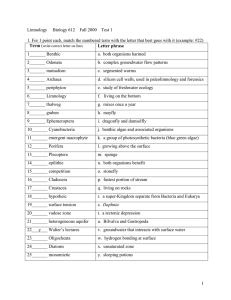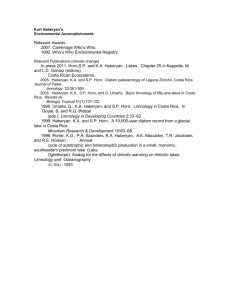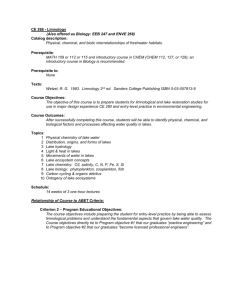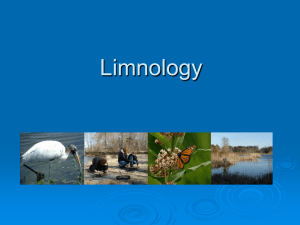GLY 4930 Limnology
advertisement
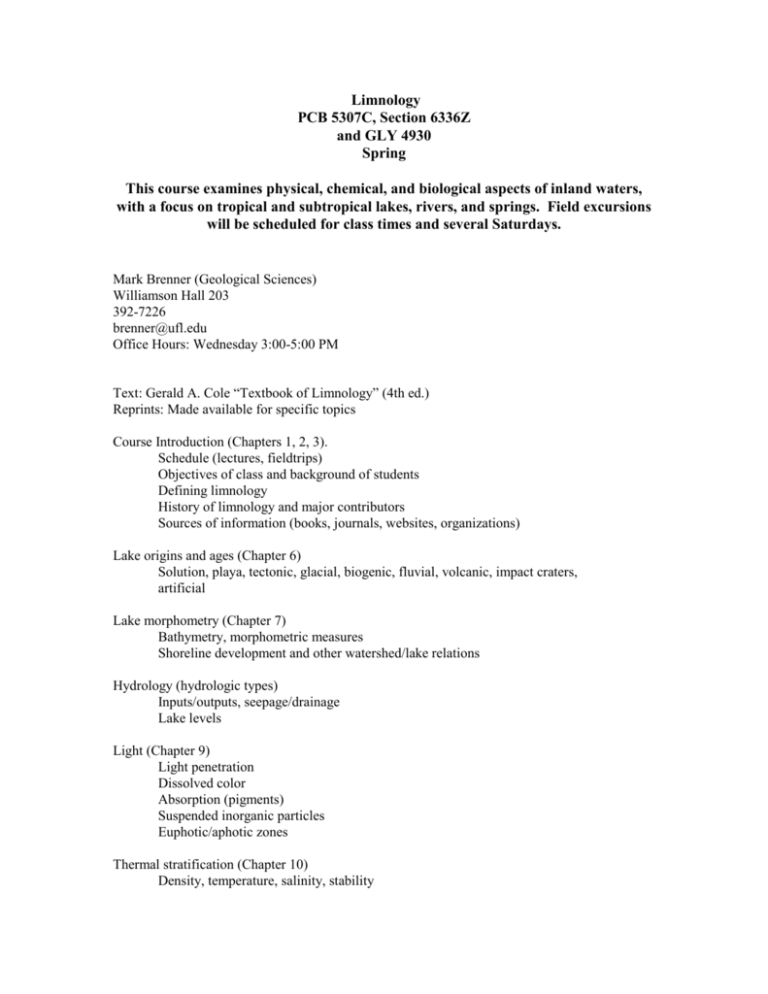
Limnology PCB 5307C, Section 6336Z and GLY 4930 Spring This course examines physical, chemical, and biological aspects of inland waters, with a focus on tropical and subtropical lakes, rivers, and springs. Field excursions will be scheduled for class times and several Saturdays. Mark Brenner (Geological Sciences) Williamson Hall 203 392-7226 brenner@ufl.edu Office Hours: Wednesday 3:00-5:00 PM Text: Gerald A. Cole “Textbook of Limnology” (4th ed.) Reprints: Made available for specific topics Course Introduction (Chapters 1, 2, 3). Schedule (lectures, fieldtrips) Objectives of class and background of students Defining limnology History of limnology and major contributors Sources of information (books, journals, websites, organizations) Lake origins and ages (Chapter 6) Solution, playa, tectonic, glacial, biogenic, fluvial, volcanic, impact craters, artificial Lake morphometry (Chapter 7) Bathymetry, morphometric measures Shoreline development and other watershed/lake relations Hydrology (hydrologic types) Inputs/outputs, seepage/drainage Lake levels Light (Chapter 9) Light penetration Dissolved color Absorption (pigments) Suspended inorganic particles Euphotic/aphotic zones Thermal stratification (Chapter 10) Density, temperature, salinity, stability Annual circulation patterns Heat Energy/Water movements (Chapter 11) Heat budgets, waves, seiches Dissolved gases (Chapter 12) Oxygen and carbon dioxide Methods of measurement Gases and circulation patterns Lakewater chemistry and the carbonate system (Chapter 13) pH, alkalinity, the CO2 system Lake acidification and alkalization Major ions in lakes (Chapter 14) Specific conductance, TDS, individual ions Nutrients, and minor chemical constituents (Chapter 15) Carbon, nitrogen, phosphorus Primary producers (Chapters 4, 5) Phytoplankton and macrophytes Zooplankton Benthic organisms Larger consumers Lotic systems (Chapter 8) Springs, rivers Estuaries, coastal lagoons Human impacts on aquatic systems Hydrology, eutrophication, contamination, exotic introductions Paleolimnology (Review Chapter 2) Paleoclimate Human impacts Florida paleo case studies Tropical paleolimnology (Take-home exam) – This is an open-book, take-home exercise and students can use any resources to complete the problems and answer questions. It is generally given after spring break and students have ample time to complete the exam. Each student in PCB 5307c will complete a field project, research report, or “proposal.” The results of this exercise will be presented to the class orally during the last week of the course or finals week. A written version (~10 pages) is also due the last week of class or finals week. The semester grade is based on the mid-term exam, class participation, class presentation, and the final written report. Students enrolled in GLY 4930 will write a paper, but will not be required to give a presentation. They are, however, expected to attend the graduate student presentations.

